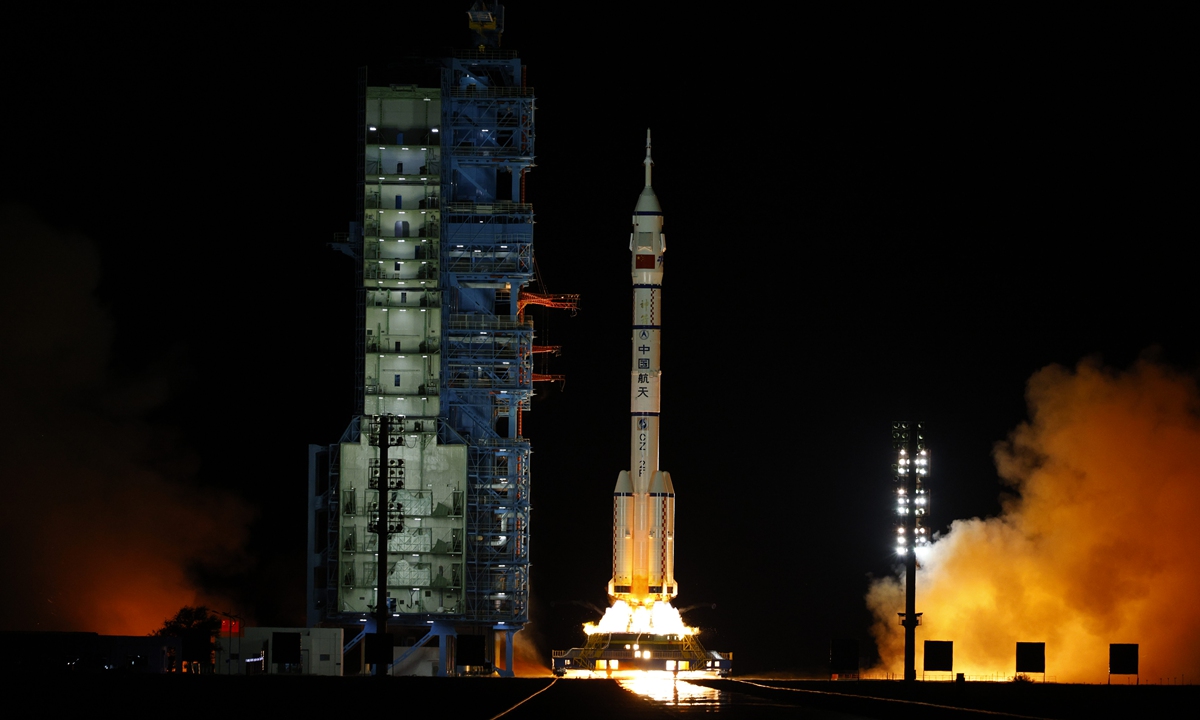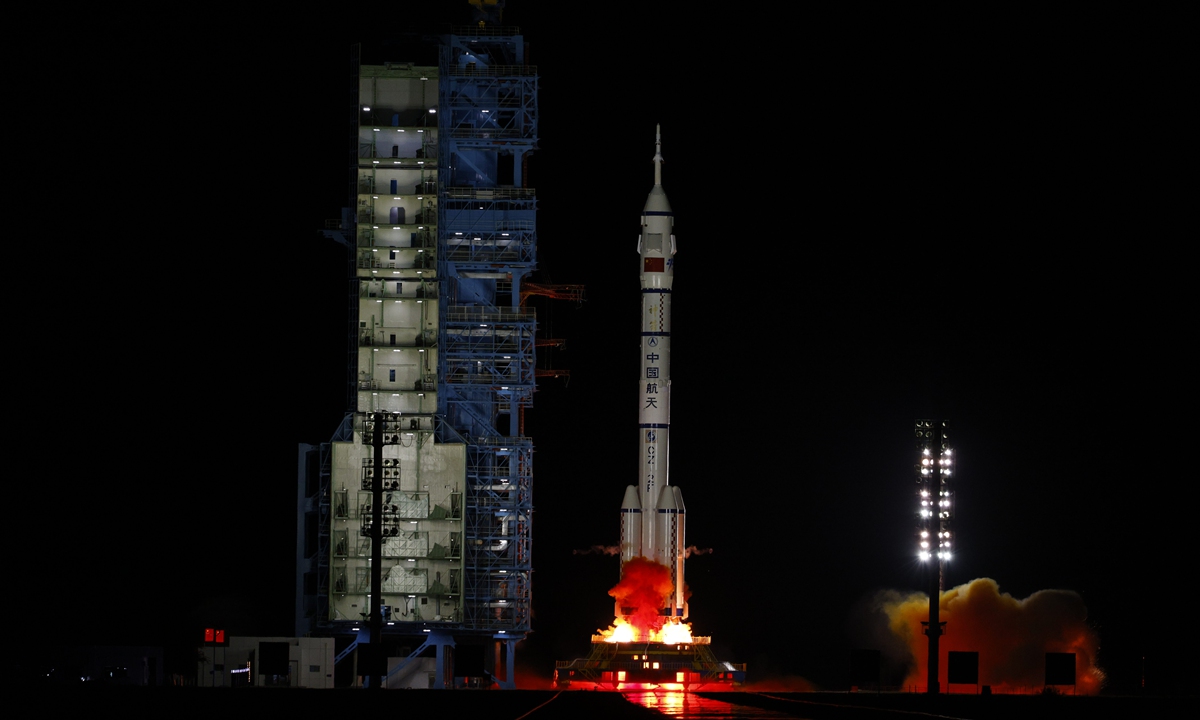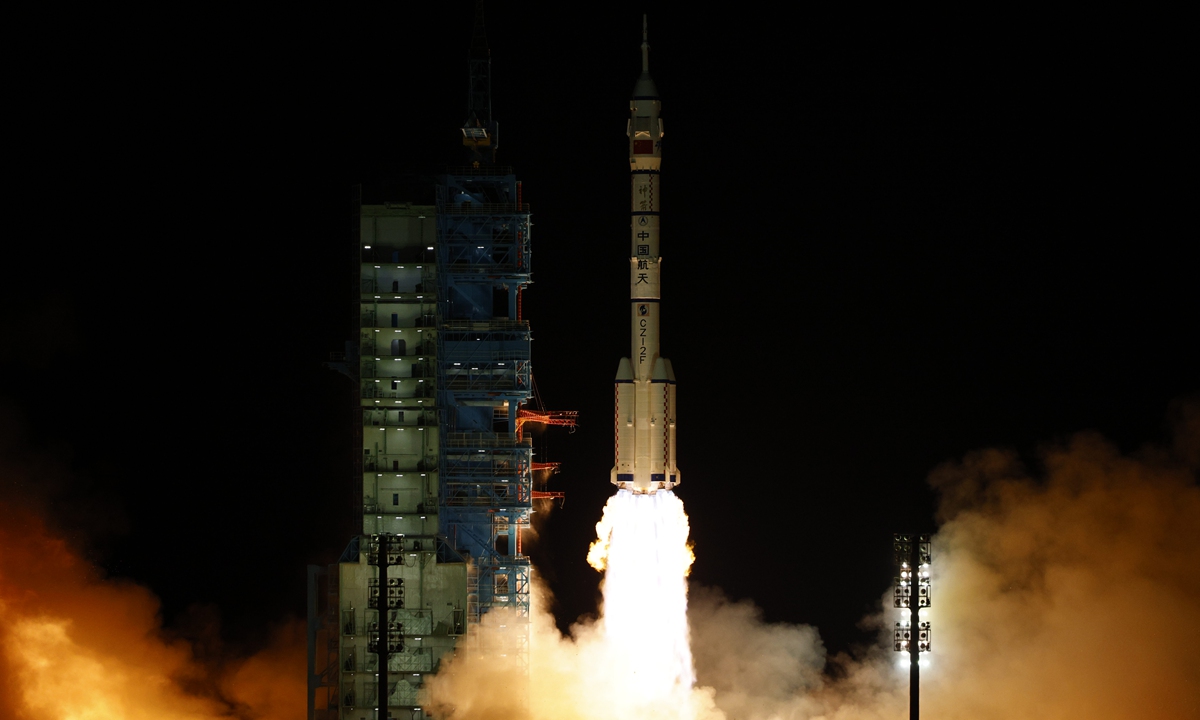
Photo: Shi Yue

Photo: Shi Yue

Photo: Shi Yue
Carrying three taikonauts, the Long March-2F Y19 carrier rocket lifted off from Jiuquan Satellite Launch Center in Northwest China early Wednesday morning, embarking on its journey to the China Space Station.
After a flight of around 10 minutes, Shenzhou-19 manned spacecraft separated from the rocket and entered its designated orbit, marking a success of the launch mission.
China Space Station is expected to welcome the new Shenzhou-19 crew led by veteran taikonaut Cai Xuzhe and new taikonauts Song Lingdong and female astronaut Wang Haoze around 6.5 hours after takeoff, according to the CMSA.
Commander Cai is set to return to the China Space Station on the Shenzhou-19 manned mission 22 months after his last flight on Shenzhou-14, setting a record for the shortest interval between missions in the history of Chinese astronauts. Song and Wang were both born in 1990 and members of the country's third batch astronauts. The Shenzhou-19 mission is their debut in space. Wang is also the country's first female spaceflight engineer, according to the China Manned Space Agency on Tuesday.
This mission marks the fourth crewed flight in the application and development phase of the space station and the 33rd flight of China's manned space program. Its primary goals are to complete an in-orbit crew rotation with the Shenzhou-18 crew, reside on the space station for about six months, conduct space science and application experiments, perform extravehicular activities (EVAs), manage cargo entry and exit, install and recover space debris protection devices and other external equipment on the space station, Lin Xiqiang, a CMSA spokesperson revealed in a press conference on Tuesday.
The mission will also involve public outreach, space education, and payload experiments to further enhance space station operational efficiency and maximize its overall utility, Lin said.
Following the launch, Shenzhou-19 will dock autonomously with the forward port of the Tianhe core module about 6.5 hours after the launch to form a three-ship, three-module complex. During their stay in orbit, the Shenzhou-19 crew will receive visits from the Tianzhou-8 cargo spacecraft and the Shenzhou-20 crewed spacecraft, with their return to the Dongfeng landing site scheduled in late April or early May, per the spokesperson.
After the in-orbit crew rotation with the Shenzhou-19 crew, the Shenzhou 18 crew is set to return to the Dongfeng landing site on November 4, he said.
The Global Times learned from the spacecraft developer China Academy of Spacecraft Technology under the country's leading space contractor CASC, on Wednesday that for this Shenzhou-19 mission, the development team optimized the orbital module's design and layout to enhance payload transportation capacity, increasing storage space by 20 percent.
This improvement enables astronauts and related systems to carry more time-sensitive and ad-hoc supplies. Not only does this advancement support the ongoing improvement of the Shenzhou-19 crewed spacecraft and future new-generation spacecraft, gradually enhancing payload transport capabilities, but it also provides more efficient and stable in-orbit support for the long-term operation of China Space Station, the academy said in a statement it provided to the Global Times.
Further optimizing the launch mission on the rocket part, the Long March-2F Y19 rocket had implemented a 30-day testing and launch preparation process for the first time, its developer China Academy of Launch Vehicle Technology revealed to the Global Times.

